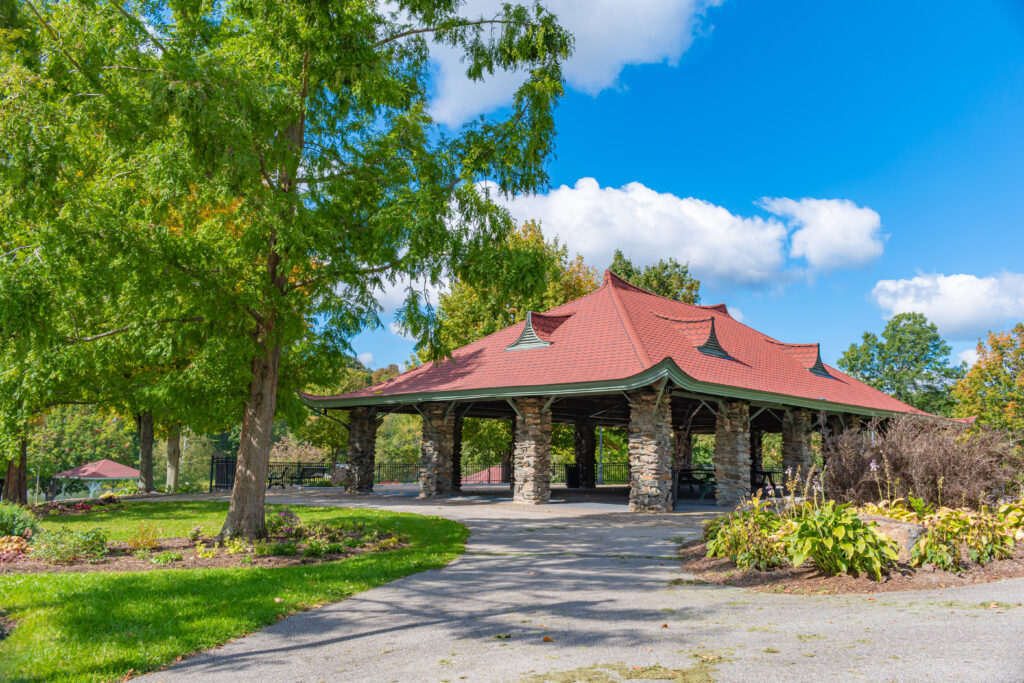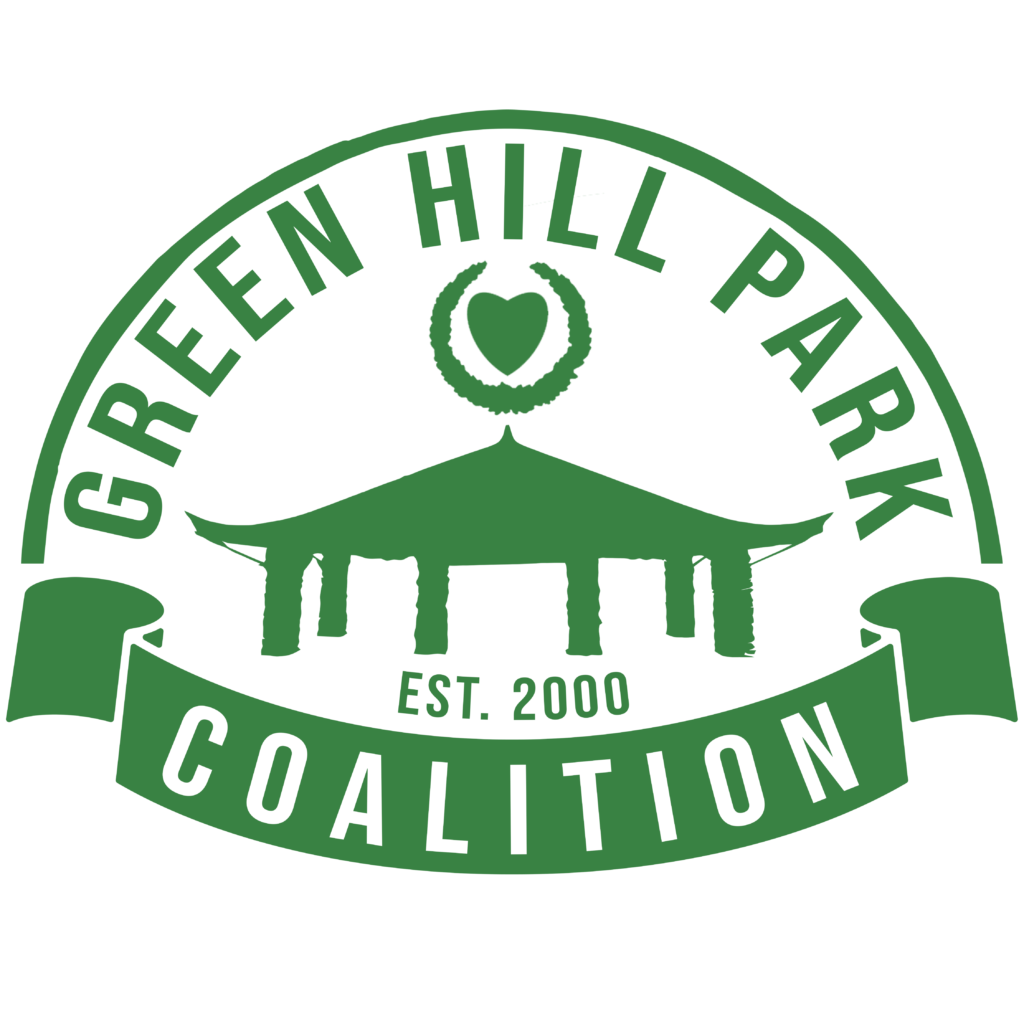Green Hill Park is Worcester’s largest park at 482.4 acres! It’s not even a close competition (the next two largest are Boynton Park and Lake Park).
Green Hill Park has a storied history. The Adams family, later the Green family, and finally the city of Worcester managed and maintained the land. It was transformed from wooded hills, to farmland, to a country estate, and finally to the public park that we know today.
Green Hill park has numerous resources, both geographic and man made. It contains two ponds, a zoo, a picnic area, a playground, a little league field, basketball courts, an 18-hole golf course, handball courts, a restaurant, a pavilion, and a number of hiking trails. Additionally, the Worcester Parks Department headquarters is also located at Green Hill.
The land that is now Green Hill park was first cleared for settlement over three hundred years ago. Aaron Adams, an Englishman and one of the proprietors of the initial land grant, was one of the first to start managing the landscape.
In 1713, a group of settlers, Aaron Adams of Sudbury, England included, purchased eight square miles from the Massachusetts Bay Colony. Adams eventually acquired 81 acres of land and built the first structure in 1714, establishing a farm on Millstone Hill. Around 1724, 100 acres adjacent to the farm was purchased by the town of Worcester to use as a quarry. In 1754, Dr. Thomas Green purchased 180 acres from Adams. This land and land that was added on at a later date became known as ‘Stormont’ or ‘Green Hill’
The son of Dr. Thomas Green, Dr. John Green, inherited the land and built the first Green family homestead in 1757. A generation after this, the Greens had expanded their landholdings, adding fifty acres and forming a small pond in the Bear Brook wetland, where Green Hill pond can be found today. William English Green added more to the property, when he purchased the quarry (although a court decision stated that the public could still mine quarry stone). His son, Andrew Green was given the family land totaling 287 acres in 1848. He increased the property size to 312 acres, transforming the site from a country farm into a large estate. Andrew Green went on to become Commissioner of Central Park in 1857, his roots in Worcester and support of landscaping and gardening playing a role in the development of his desire to improve city life through the development of parks and cultural institutions. In 1850, Andrew Green divided the original family home and built a new ‘mansion’ in between. His brother Martin Green came to live at the estate and manage it in 1872. Trained as an engineer, Martin Green made the decision to dam the Bear Brook valley and form the present day Green Hill pond.
Andrew Green died in 1903, leaving the estate of 529 acres to his nieces and nephews, who ended up selling the land to the city of Worcester. They contributed $50,000 towards the purchase price of $104,900. The land officially became Green Hill Park on December 27th, 1905.
The Green family mansion remained in the park until 1957, when it was demolished. Vandalism, damage from the hurricane of 1948, and maintenance costs all played a role in the decision to demolish the mansion.
Only a year after the land became a park, two rooms of the mansion were open to the public for use as ‘resting rooms’ for women and children. One room was used as a laboratory for students to study birds and another room was used as a lecture and meeting room by the Worcester Historical Society. In 1906, attendance at the mansion reached a height of 912 people. Also, in 1906 the Worcester City Missionary Society used the upper two floors of the mansion as a vacation spot for mothers with sick children and for those in need of convalescent care. Two large tents and a portion of the former Crawford Farm barn were also used a children’s hospital during the summer of 1906.
A 9-hole golf course was first constructed in 1919. It was later expanded to 18 holes.
In 1927, construction began the Memorial Grove, a living monument to the citizens of Worcester killed during WWI. It was dedicated in 1928. Unfortunately, many of the trees did not make it to the 21st century, but thanks to work by the Green Hill Park Coalition and the Worcester Tree Initiative, many have been replaced and all of those lost since the original planting will be replaced in 2017.
The Parks department building, on the former site of the Green Mansion, was dedicated in December of 1976. That building costs about $80,000 and was located on Crown Hill. That building was later removed, although the paved roadway can still be seen traversing the hill, from the Green Hill Parkway entrance. There was also a toboggan run on this hill sometime ago.
In 1929, a bowling green was opened at what is now the small playground area as seen from Lincoln Street. The bowling green was replaced by a pool, basketball courts, and archery practice area.
The park lost considerable land over the years. 7.24 acres of the park, the highest land at the park located on the top of Millstone Hill, was transferred to the State for the National Guard Armory in 1957. In 1967, the state took another 5 or so acres to construct 290, drastically altering the park land and resources at the Holland Recreation Area. More parkland was also lost for the construction of Worcester Technical High School.
The quarry, located to the left of Skyline drive if you are heading into the park, was used as a dump for many years both legally and illegally and in 1968 it was ordered closed. Considerable dumping took place there during the 40s and 50s and in the 60s the city used the quarry as a dump for building material that was often times burned, creating pollution that disrupted life for those living in the adjacent neighborhood. The quarry was reopened in 1971 as a sanitary landfill managed by the city. It was completed in 1973, graded and revegetated. This is the area on the top of the hill that is now a sports field, across from Worcester Tech. There is also a skate park there!
The Barnyard Zoo opened in 1974 after being refurbished. There were once buffalo, but not after 1974.
The Parks Department headquarters later moved to the Armory building on Skyline Drive, where it is still located today.
In 2002, Green Hill park became the home of the Massachusetts Vietnam Veterans Memorial. The memorial itself is four acres of pond, walking paths, flags, and large elegant stones inscribed with the names of each Massachusetts resident who died in combat or as a result of wounds suffered while in action in Vietnam. Some of the stones also display the text of letters written home by some of the soldiers who died.


